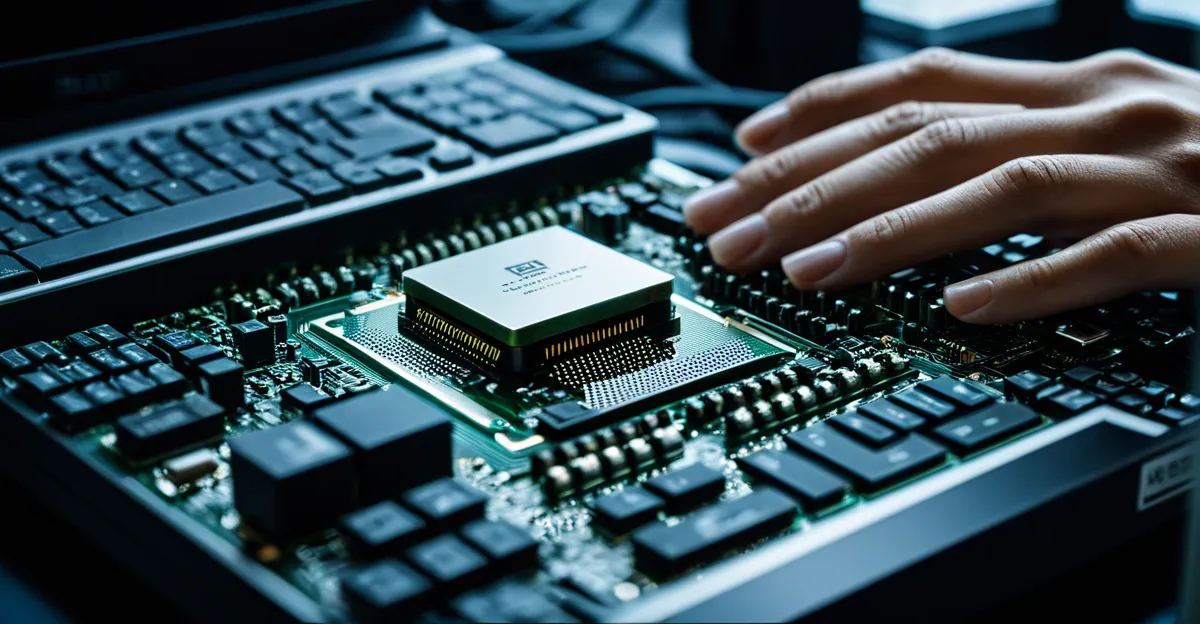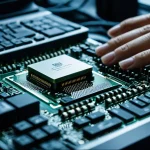The foundational role of computing hardware in enabling technological advancement
Computing hardware forms the backbone of all technology innovation. Without continuous improvements in hardware, many of today’s breakthroughs in artificial intelligence, data processing, and connectivity would not be possible. The performance and capability of computing hardware directly influence which technological progress can be achieved, setting the stage for new solutions and services.
Historically, advances in computing hardware—ranging from faster processors to increased memory capacity—have driven key technology milestones. For example, the transition from bulky vacuum tubes to transistors allowed computers to become smaller, faster, and more reliable. Later, the development of microprocessors unlocked the potential for personal computers and eventually mobile devices, fueling innovation across industries.
Also to read : How Does the Evolution of UK Computing Hardware Impact Everyday Technology?
The relationship between hardware performance and new technological capabilities operates as a cycle: enhanced computing hardware enables more complex algorithms and applications, which in turn demand further hardware improvements. This synergy propels technological progress, making computing hardware essential for sustaining digital transformation and pushing the boundaries of what technology can achieve.
Core advancements in computing hardware shaping the future
Advances in processor technology have dramatically boosted computational power, enabling more complex and faster calculations. Modern processors now incorporate multiple cores and enhanced architectures that deliver significantly increased performance. Specialized chips like GPUs, TPUs, and FPGAs have become crucial in accelerating specific workloads. For example, TPUs focus on machine learning tasks, while FPGAs offer customizable hardware acceleration, making systems more efficient and adaptable.
Topic to read : How does UK computing hardware contribute to the development of smart cities?
Memory technologies also play a pivotal role. Improvements in RAM, particularly higher bandwidth and lower latency variants, provide faster data access, reducing bottlenecks in processing. Additionally, advances in non-volatile memory are bridging the gap between volatile RAM and traditional storage, allowing for persistent data retention while maintaining speed.
Storage solutions have scaled to meet the demands of big data and cloud computing. Solid-state drives (SSDs) with increased capacity and faster read/write speeds have largely replaced traditional hard drives, enhancing overall system responsiveness. These hardware advancements collectively drive the evolution of computing capabilities, enabling industries to manage vast datasets and perform intensive computations more effectively.
Real-world innovations powered by next-generation hardware
Next-generation hardware is crucial in fueling artificial intelligence breakthroughs by providing the high-performance computing power necessary to process complex algorithms and large datasets rapidly. This surge in computational ability enables AI models to learn more efficiently, resulting in advances such as enhanced natural language understanding and improved predictive analytics.
The widespread adoption of Internet of Things (IoT) devices is another area transformed by modern hardware innovations. Efficient, connected devices with edge computing capabilities reduce latency and bandwidth use, allowing real-time data processing closer to where the data is generated. This approach supports smarter environments—ranging from smart homes to industrial automation—where seamless interactions between devices generate actionable insights instantly.
Additionally, scientific research is reaching new heights thanks to enhanced hardware capacities. Sophisticated simulations, modelling, and data analysis tasks that require immense computational resources are now more feasible. These improvements accelerate discovery in fields like climate science, genomics, and physics by enabling researchers to tackle problems with greater precision and scale than before.
Together, these real-world examples illustrate how next-generation hardware is a fundamental driver of innovation impact across AI, IoT, and scientific research domains.
Emerging hardware trends and their influence on future technology
Exploring the latest technology trends reveals two groundbreaking developments shaping the future hardware landscape: quantum computing and neuromorphic hardware. Quantum computing promises unparalleled processing power by leveraging quantum bits, or qubits, which can exist in multiple states simultaneously. This capability enables solutions to complex problems in cryptography, optimization, and material science far beyond the reach of classical computers. However, challenges such as qubit stability, error correction, and scalable architectures remain significant hurdles to practical implementation.
Meanwhile, neuromorphic hardware draws inspiration from the human brain’s structure and functions. By mimicking neural networks at the hardware level, these systems accelerate machine learning tasks with higher efficiency and speed compared to traditional processors. Neuromorphic designs reduce latency and power consumption, offering new possibilities for real-time processing in areas like autonomous vehicles and robotics.
Energy efficiency is a critical factor across both these emerging hardware trends. As future hardware evolves, sustainability considerations drive the development of architectures that balance performance with reduced environmental impact. This focus on energy-conscious design ensures that the next generation of computing technologies not only delivers enhanced capabilities but also aligns with global efforts toward greener, more sustainable solutions.
Predicting the impact of hardware innovation on tomorrow’s breakthroughs
Emerging hardware innovation is set to redefine what technology can achieve, powering future predictions that extend well beyond current capabilities. Experts agree that as hardware evolves, it will catalyse new applications across industries such as healthcare, artificial intelligence, and environmental monitoring. For example, advancements in sensor technologies and processing units will enable devices to analyze complex data faster, sparking breakthroughs in real-time diagnostics and autonomous systems.
The societal and economic benefits from such progress are substantial. Enhanced hardware will improve productivity by automating routine tasks, reduce energy consumption through more efficient components, and promote inclusivity by making technology accessible to broader populations. These benefits demonstrate the far-reaching potential that continuous hardware innovation holds for shaping healthier, smarter, and more sustainable communities.
Nevertheless, this rapid pace raises challenges. Ethical considerations, including privacy and data security, must be addressed as devices become more integrated into daily life. Furthermore, ensuring equitable access to these advancements is critical to avoid deepening existing inequalities. Scalability also poses a hurdle; hardware solutions must be adaptable to diverse environments to maximize their impact globally. By anticipating these challenges, stakeholders can better prepare for a future powered by transformative hardware innovation.


